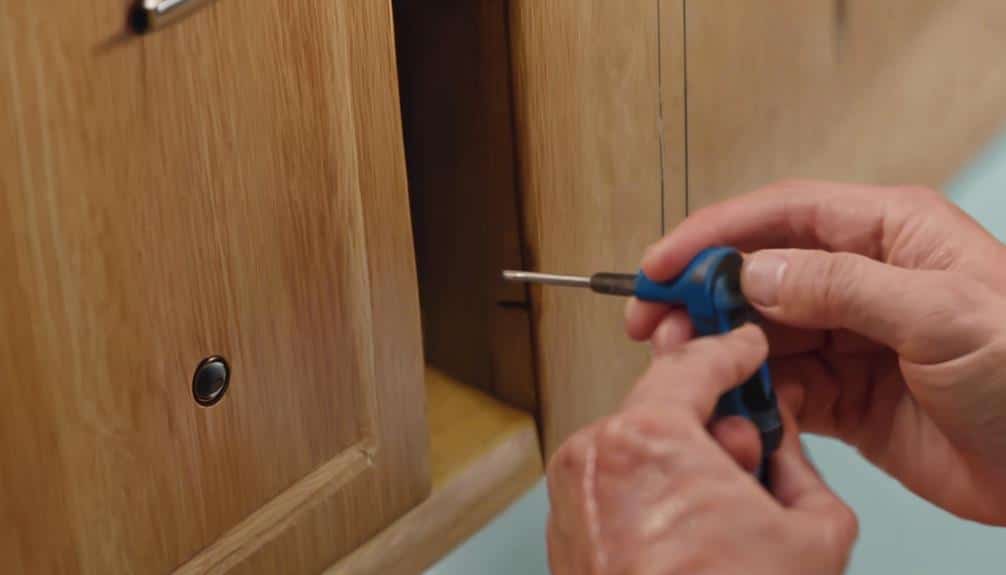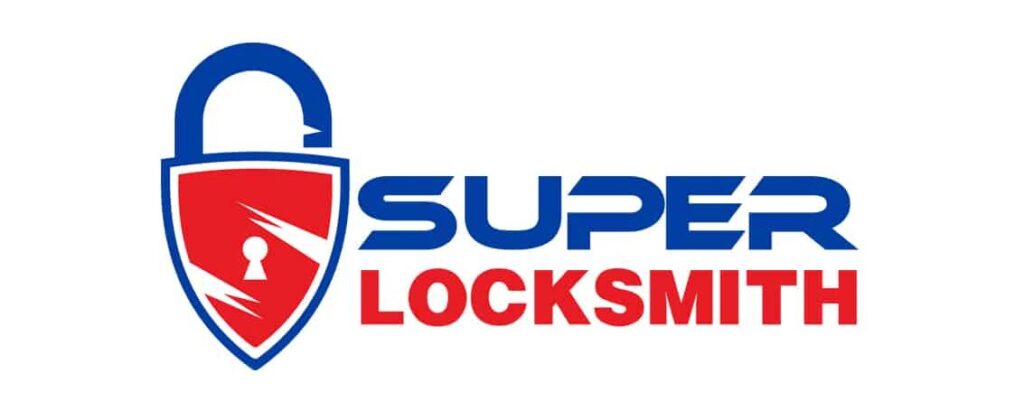Are you tired of constantly worrying about the safety of your valuable belongings? We all know the importance of keeping our cabinets and drawers secure, but sometimes the installation process can be a daunting task.
Well, fear not! In this easy cabinet and drawer lock installation guide, we will provide you with step-by-step instructions and helpful tips to ensure a hassle-free process.
So, whether you're a DIY enthusiast or just looking for some extra security, keep reading to discover how you can easily protect your belongings with cabinet and drawer locks.
Types of Cabinet Locks
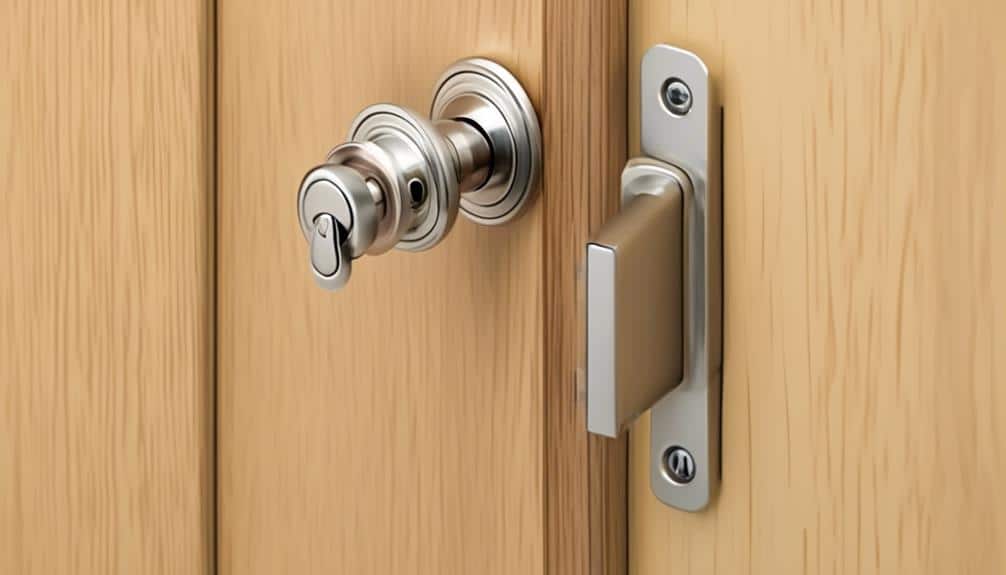
Let's delve into the various types of cabinet locks that you can choose from to secure your belongings. When it comes to cabinet locks, there are different types available in the market, each designed to meet specific security needs.
One of the most common types is the magnetic cabinet lock. These locks use powerful magnets to keep the cabinet doors securely closed. They're easy to install and don't require any drilling, making them a popular choice for those who want a hassle-free option.
Another type is the cam lock. These locks consist of a rotating cam that locks the cabinet door in place. They're commonly used in office furniture and cabinets.
If you're looking for a more advanced option, electronic cabinet locks are worth considering. These locks use a keypad or RFID card to grant access. They offer convenience and enhanced security features.
When choosing the right lock, consider factors such as the level of security required, ease of installation, and budget. It's important to select a lock that matches your specific needs and provides the desired level of protection for your belongings.
Tools Needed for Installation
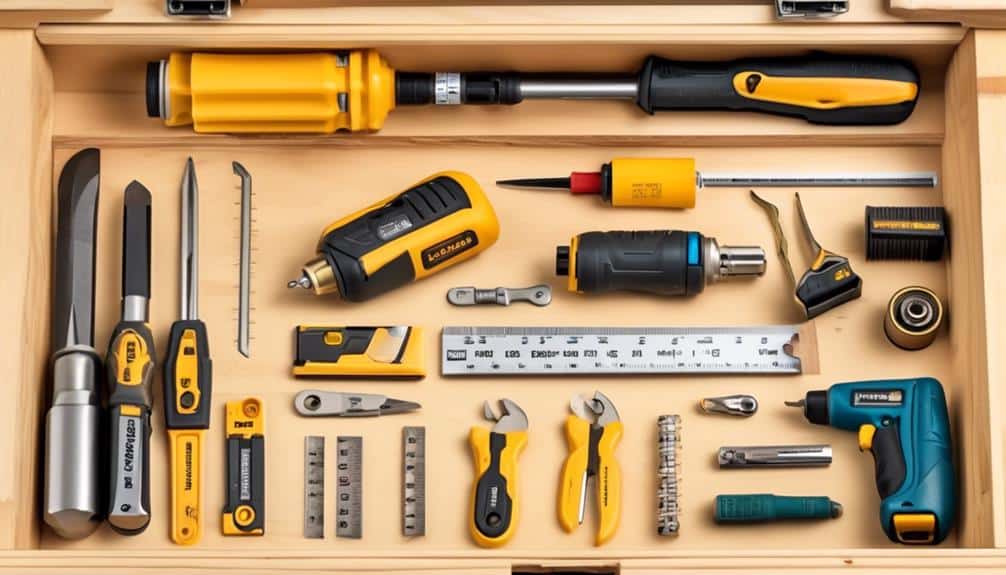
Now let's talk about the necessary tools for installing cabinet and drawer locks.
In this section, we'll provide step-by-step instructions on how to properly use these tools for a successful installation.
Additionally, we'll address common issues that may arise during the process and offer troubleshooting tips to overcome them.
Necessary Tools for Installation
To successfully install cabinet and drawer locks, having the necessary tools is essential for a smooth and efficient process. Here are the tools you'll need:
- Screwdriver: A screwdriver is needed to remove any existing screws and to secure the lock in place. Make sure to have both a flathead and Phillips-head screwdriver on hand, as different locks may require different types of screws.
- Drill: Depending on the type of lock you choose, you may need a drill to create holes for the lock and screws. It's important to use the correct drill bit size for a proper fit.
- Measuring tape: Accurate measurements are crucial when installing cabinet and drawer locks. Use a measuring tape to determine the placement of the lock and ensure it aligns with your needs.
Step-By-Step Instructions
After gathering the necessary tools for installation, we can now proceed with the step-by-step instructions to install cabinet and drawer locks.
To begin, ensure that the area where the lock will be installed is clean and free of any debris.
Next, position the lock on the cabinet or drawer, making sure it's aligned properly. Use a pencil to mark the screw holes on the surface.
Then, using a power drill or a screwdriver, secure the lock in place by screwing it tightly onto the surface.
Test the lock to ensure it's functioning correctly, and troubleshoot any issues if necessary.
Finally, repeat these steps for each cabinet or drawer you wish to secure.
Troubleshooting Common Issues
Sometimes, despite our best efforts, we may encounter common issues while installing cabinet and drawer locks, but with the right tools, troubleshooting becomes a straightforward process. Here are some common lock problems and tips for fixing lock malfunctions:
- Misalignment: If the lock isn't aligning properly with the strike plate, use a screwdriver to adjust the screws on the strike plate until the lock fits snugly.
- Stiff or Sticky Lock: Apply a small amount of graphite lubricant to the keyhole and gently insert and remove the key several times to distribute the lubricant evenly.
- Loose Lock: Tighten the screws on the lock with a screwdriver to ensure it's securely attached to the cabinet or drawer.
Preparing the Cabinet or Drawer
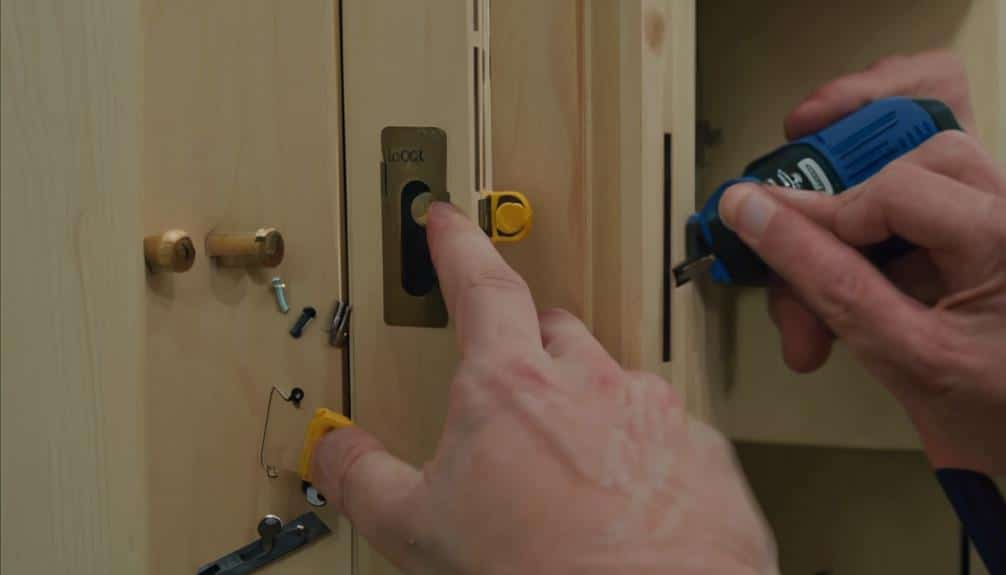
Before installing cabinet or drawer locks, it is essential to properly prepare the cabinet or drawer to ensure a secure and functional installation. Preparing the cabinet or drawer involves two key steps: determining the best placement for the lock and selecting the right lock for your specific cabinets and drawers.
To determine the ideal placement for the lock, consider the accessibility and convenience of the lock for everyday use. It should be easily reachable for adults but out of reach for children. Additionally, ensure that the lock does not interfere with the functionality of the cabinet or drawer. For example, if you have a pull-out drawer, you may need to choose a lock that can be attached to the side or back of the drawer.
Choosing the right lock for your cabinets and drawers is crucial for ensuring optimal security. Here is a helpful table outlining the different types of locks and their features:
| Lock Type | Features |
|---|---|
| Magnetic Lock | Invisible from outside, easy to operate with a magnetic key |
| Spring Lock | Quick and simple installation, suitable for lightweight drawers |
| Cam Lock | Requires a key to unlock, provides high security for cabinets |
| Combination Lock | No need for keys, convenient for frequent access |
| Sliding Bolt Lock | Sturdy and durable, suitable for heavy-duty cabinets |
Step-by-Step Lock Installation Process
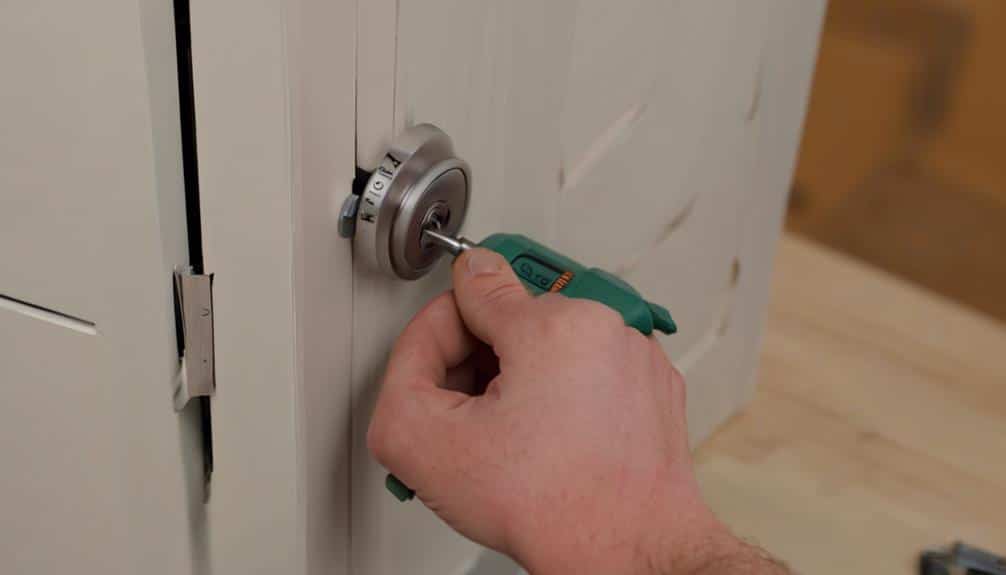
To begin the lock installation process, gather all the necessary tools and materials for the job. This will ensure that you have everything you need within reach, making the installation process smoother and more efficient.
Some lock installation tips to keep in mind while choosing the right lock type are:
- Consider the level of security needed: When selecting a lock for your cabinet or drawer, it's important to assess the level of security required. Determine whether you need a basic lock or a more advanced one with additional features such as keyless entry or biometric access.
- Measure the dimensions: Before purchasing a lock, measure the dimensions of your cabinet or drawer to ensure the lock will fit properly. Taking accurate measurements will prevent any issues during the installation process.
- Read the instructions carefully: Each lock may have specific installation instructions, so it's crucial to read them thoroughly before you begin. This will ensure that you understand the process and can install the lock correctly.
Troubleshooting Common Installation Issues
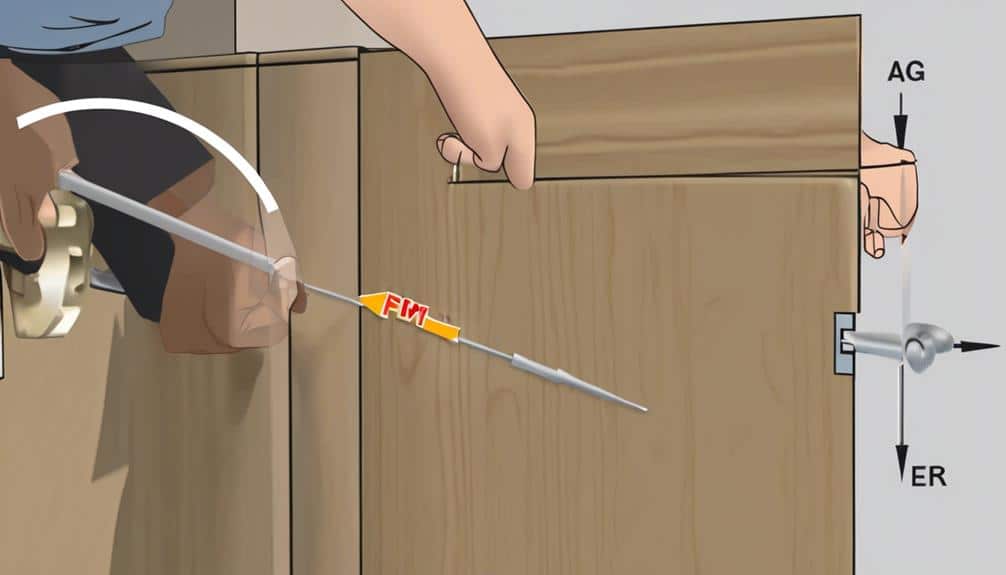
When encountering common installation issues, it is important to troubleshoot effectively in order to ensure a successful lock installation process. Two common issues that may arise during installation are preventing lock damage and ensuring proper alignment of the lock mechanism. By following a few simple steps, you can easily troubleshoot these issues and complete the installation with ease.
To prevent lock damage during installation, it is crucial to handle the lock with care. Avoid applying excessive force or pressure, as this can cause the lock to break or malfunction. Additionally, make sure to use the correct tools and follow the manufacturer's instructions carefully. This will help you avoid any unnecessary damage to the lock during the installation process.
Another common issue that may occur is improper alignment of the lock mechanism. This can result in difficulties when locking or unlocking the cabinet or drawer. To ensure proper alignment, double-check that the lock is centered and level before tightening the screws. Use a level or measuring tape to ensure accuracy. If the lock is still not aligned properly, try adjusting the position of the strike plate or latch to achieve the desired alignment.
Troubleshooting common installation issues is crucial to ensure a successful lock installation process. By preventing lock damage and ensuring proper alignment, you can enjoy the added security and convenience that cabinet and drawer locks provide. Refer to the table below for a quick summary of troubleshooting tips:
| Common Issue | Troubleshooting Tips |
|---|---|
| Lock damage prevention | Handle lock with care, use correct tools, follow manufacturer's instructions |
| Proper alignment of lock mechanism | Double-check centering and leveling, adjust strike plate or latch if necessary |
Additional Tips for Cabinet and Drawer Security
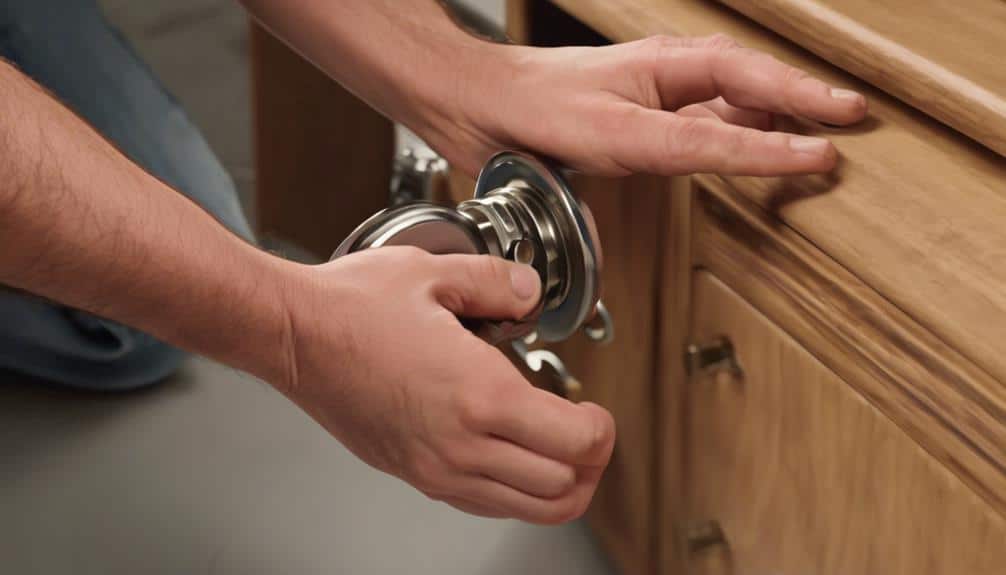
Now, let's talk about some additional tips for enhancing the security of your cabinets and drawers.
When it comes to choosing the right lock, consider the specific needs of your cabinets. Some common lock types include cam locks, deadbolt locks, and magnet locks.
Additionally, make sure you have the necessary tools for installation, such as a drill, screwdriver, and measuring tape.
Lastly, when securing drawers, it's important to ensure that the lock mechanism is strong and resistant to prying or tampering.
Lock Types for Cabinets
Consider various lock types to enhance the security of your cabinets and drawers. Installing cabinet locks offers several benefits, such as preventing unauthorized access, protecting valuable items, and ensuring the safety of children. When choosing the right lock for your cabinet, it's important to consider factors such as the level of security needed, ease of installation, and aesthetic appeal.
Here are three common types of cabinet locks to consider:
- Keyed locks: These locks require a key to unlock and provide a high level of security. They're suitable for cabinets storing valuable items or sensitive documents.
- Magnetic locks: These locks use magnets to secure cabinets and are often used in childproofing. They're easy to install and operate, making them a popular choice for households with young children.
- Cam locks: These locks are versatile and can be used on various types of cabinets. They offer a good balance between security and convenience, as they can be easily opened with a key or combination.
Installation Tools Needed
To ensure successful installation of cabinet and drawer locks, gather the necessary tools beforehand for a smooth and efficient process.
When it comes to installing cabinet locks, you'll need a drill, drill bits, a screwdriver, measuring tape, and a pencil. The drill will be used to create holes for the lock and the screwdriver will be necessary for attaching the lock to the cabinet.
The measuring tape and pencil are important for marking the precise location for the lock.
For drawer lock installation, you'll need similar tools, including a drill, screwdriver, measuring tape, and pencil. Additionally, you may need a chisel to create a recessed area for the lock.
Having these tools ready before starting the installation process will save you time and ensure that the locks are installed correctly and securely.
Securing Drawers Effectively
When securing drawers effectively, it's essential to prioritize the overall security of your cabinets and ensure that all locks are installed correctly and securely. To achieve this, consider the following tips:
- Drawer lock advantages: Installing drawer locks not only adds an extra layer of security to your cabinets but also prevents unauthorized access to sensitive items. These locks come in various types, including key locks, combination locks, and magnetic locks, allowing you to choose the one that best suits your needs.
- Childproofing drawers effectively: If you have children at home, it's crucial to childproof your drawers to prevent accidents and keep them out of harm's way. This can be done by installing childproof locks, which are specifically designed to be difficult for children to open but still accessible for adults.
- Proper lock placement: When installing drawer locks, make sure to place them in a position that's both secure and convenient for everyday use. Consider the type of lock and the location of the drawers to determine the best placement for maximum effectiveness.
Frequently Asked Questions
How Do I Choose the Right Type of Cabinet Lock for My Specific Needs?
When choosing the right type of cabinet lock for our specific needs, we consider several important factors.
We assess the level of security required, the type of cabinet or drawer, and the ease of installation.
It's crucial to determine if we need a key-based lock or a combination lock, depending on our preferences and usage.
Additionally, we consider the durability and material of the lock to ensure it can withstand daily use.
Can I Install Cabinet Locks on Cabinets or Drawers That Are Made of Materials Other Than Wood?
Yes, you can definitely install cabinet locks on cabinets or drawers that are made of materials other than wood. In fact, using cabinet locks on non-wooden cabinets and drawers can offer numerous benefits.
For example, if you have cabinets or drawers made of metal or plastic, installing locks can provide an extra layer of security and help prevent unauthorized access. Additionally, cabinet locks can be easily installed on various materials, ensuring that your belongings are safe and secure.
Are Cabinet Locks Easy to Remove in Case I No Longer Need Them?
Removing cabinet locks is a relatively easy task, making it convenient for reusing them in case they're no longer needed. With a few simple steps, such as using a screwdriver to unscrew the lock from the cabinet or drawer, you can easily remove the lock without causing any damage.
This allows for flexibility and adaptability, ensuring that you can adjust your cabinet security as needed without any hassle.
Can I Install Cabinet Locks on Cabinets or Drawers With Curved or Irregular Surfaces?
Installing cabinet locks on curved or irregular surfaces can be a bit challenging, but with some creativity and alternative options, it's definitely doable.
We've encountered this scenario before and found that adhesive locks or adjustable strap locks work well in such cases. These options provide a secure solution without the need for drilling or damaging the surface.
Is It Necessary to Hire a Professional for Cabinet Lock Installation, or Can I Do It Myself?
Hiring a professional for cabinet lock installation offers several benefits. They have the experience and expertise to ensure proper installation, minimizing the risk of any mistakes. Professionals also have the necessary tools and equipment to handle the job efficiently.
On the other hand, attempting to install cabinet locks yourself can lead to common mistakes like incorrect placement or improper alignment. These mistakes can compromise the effectiveness of the lock and the security of your cabinets and drawers.

